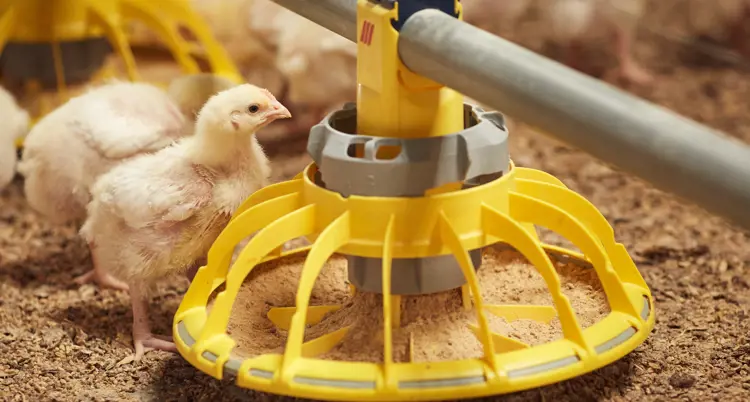A Comparative Analysis of Two-Phase vs. Three-Phase Feeding Strategies
Farmers are rethinking conventional nutrition strategies as feed costs account for a larger proportion of broiler production expenses. The two-phase technique, which overlooks the grower phase, is gaining popularity, particularly among growers who are struggling financially and logistically. Does this simplified method work?

Why Three Phases? The science behind conventional wisdom
Before embracing simplification, it is crucial to understand why the starter, grower, and finisher phases exist. Each phase is carefully formulated to meet evolving physiological demands.
|
Feeding Phase |
Feeding Ages/ Period |
Primary Nutritional Focus |
Purpose |
|
Starter |
0–18 days. |
High protein and digestibility. |
Supports skeletal and organ development during the period of rapid tissue growth. |
|
Grower |
19–30 days. |
Balanced protein and energy. |
Promotes muscle accretion while minimizing excessive fat deposition. |
|
Finisher |
31 days to market. |
Lower protein, energy-dense. |
Maximizes weight gain and feed conversion efficiency as birds approach mar- ket readiness. |
Table 1: Conventional feeding technique
What happens when the middle phase is removed? Let us dive into the biological rationale that underpins this standard.
Low-Input reality check: What happens when the Grower Phase disappears?
This section reveals how skipping the grower feed impacts bird health and carcass quality, sometimes with surprising results. In resource-limited farms, the two-phase approach is common, but often without precise monitoring. Visual checks replace scales, and birds are sold live.
At larger, better-equipped farms, the two-phase feeding strategy was tested under controlled conditions. While mortality rates stay low, hitting growth targets proves challenging. Why does removing the grower phase slow growth even when management is top-notch? Let us unpack the facts.
Timing is everything: How nutrient delivery shapes growth and quality
|
Aspect |
Description |
Advantages of Two- Phase Feeding |
Limitations of Two-Phase Feeding |
Potential Outcomes of Skipping the Grower Phase |
|
Nutrient Timing |
Importance of feeding specific nutrients at appropriate growth stages. |
Simplifies feed man- agement and reduces procurement/storage. |
May lead to nutrient imbal- ances during the critical mid -growth phase. |
Birds may underper- form on growth or accumulate exces- sive fat. |
|
Feed Complexity |
Number of distinct feed rations used in the program. |
Lower feed complexi- ty, easier to manage. |
Loss of targeted nutrition during growth phases. |
Compromised growth efficiency and car- cass quality. |
|
Market Targeting |
Suitability of feed pro- gram for informal vs. formal markets. |
Acceptable for infor- mal markets, tolerant of higher fat. |
Not suitable for processors requiring lean, uniform car- casses. |
May limit market ac- cess or reduce prod- uct quality. |
|
Growth Performance (21 – 30 Days) |
Critical period for mus- cle accretion and con- trolled fat deposition. |
A two-phase system reduces management and cost. |
Reduced muscle gain and increased fat deposition. |
Weight gain below target and fat accu- mulation in carcass- es. |
|
Carcass Composition |
Muscle-to-fat ratio af- fected by feeding strat- egy. |
Cost savings are po- tentially prioritized over carcass quality. |
Increased fat-to-muscle ratio in carcasses. |
Poor grading results and reduced com- mercial value. |
Table 2: Advantages and limitations of skipping the grower ration
Making Two-Phase Feeding work: Practical tips for producers
Cutting costs is only part of the story. Here is how producers can tweak finisher feed, monitor growth, balance amino acids, and align feeding goals with market demands to optimize outcomes even with a simplified system.
Conclusion
The bottom line is to simplify wisely and grow smarter. The appeal of fewer feed phases is clear: less hassle, lower costs, but it comes with limitations. Producers who understand the biological trade-offs and market expectations can still succeed. The secret? Strategic feeding backed by monitoring and expert advice. Simpler does not have to mean settling for less.
For more information on how to do an comparative analysis of Two-Phase vs. Three-Phase Feeding Strategies, please contact your De Heus technical advisor - https://www.deheus.co.za/meet-our-team
